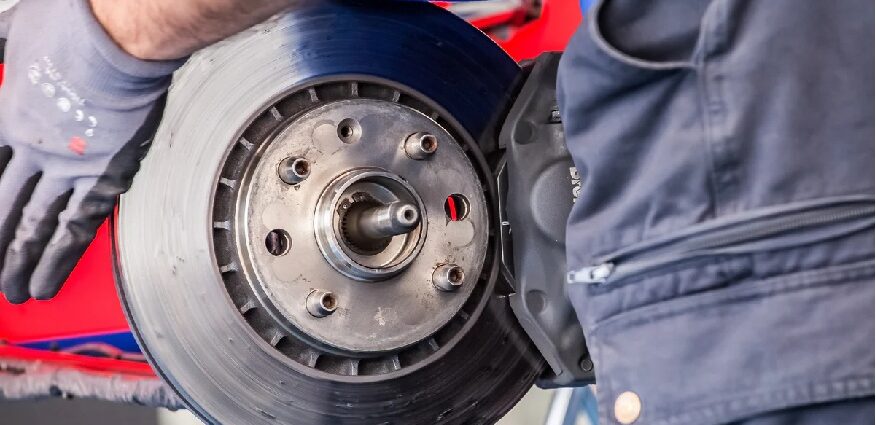Brakes are the veins of any vehicle; they secure not only its proper functioning but also the lives of everyone inside. The brake line fittings, considered to be part of the complex system of components that make up the braking system, always remain unnoticed. The fittings not only offer ease of maintenance but they are also important for the structural integrity of the brake lines and hence cannot be ignored. The following are the five must-ask questions to know if your brake line fittings were installed correctly.
1. Which Material for Brake Line Fittings is used?
The material for brake line fittings is a critical factor that contributes to the service life and reliability of the products. Brake system cables which have been made of steel in conventional days are sturdy, but they get rusted very fast especially in humid regions, using salts on roads. Yet, the reasons have been replaced by advanced technology materials like copper, copper-nickel, or even composite materials.
Copper nickel brake line have high corrosion resistance. This attribute explains why so many people, both amateurs and experts, prefer them. However, this variety of brake lines conciliates in its structure the corrosion resistance of copper and the solidity of steel, giving a product that lasts for a long time and is stable. When assessing your brake line fittings, inquire about the material used and opt for corrosion-resistant options for enhanced safety and longevity.
2. Will Your 3/16 Brake Line Tubing Fit With Brake Line Fittings?
Compatibility is one of the crucial parameters to consider when dealing with brake line fittings. A particular point to consider is that your fittings need to be intended to accept a specific diameter of your brake line tubing which is key to secure and leak-free connection between them. The brake line is a standard of the industry and its size is usually 3/16 inches, but there are also deviations from that size. As leakages and these types of failures may occur, it is necessary to make sure that your fittings and the diameter of your brake line tubing are compatible with the diameter of your brake line tubing in order to prevent these problems.
3. Do Your Brake Line Fittings Utilize Proper Retention Methods?
Proper retention techniques are very essential in order to secure the brake line fittings in place and avoid these leakages or disconnections as a result of vibration from the external forces during the drive. Brake line clips that were designed to keep the brake lines in their place and unmoved by any vibrations or extra moves, fixing them to the chassis, are a familiar part of the installment process. These panels may be set up as single configuration, two-member items, or offset clips on any surface in compliance with the magnitude of the mounting requirements.
Finalizing the consideration of retention methods used in your brake line fittings along the line with industry standards is the key to guaranteeing the safety and reliability of the braking system. Leakage or loosened and poorly secured fittings can cause the brake lines to be damaged, the fluid to leak, and the final outcome will be a weakened brake system.
4. Is Your Brake Line Fittings Correctly Flared?
“Flaring” is an integral step that goes into every brake line installation process. It involves shaping the end of the tube and providing it with a saddle shape such that it will be able to seal the fitting. Failing to flare properly can lead to breaking within the fitting or to leaks that can undermine your braking system. Consequently, the acquisition of a powerful brake line flaring tool and adhering to the vital techniques during installation are of the uttermost significance to ensure that your connection is durable and leak-free.
As related to the fittings of your brake line, the quality of the flares should be your primary focus and they should meet the technical standards of the industry. Indications of inconsistencies or improper handling of the car’s components should be noticed and should be dealt with immediately to avoid the occurrence of unpredictable dangers.
5. Have Your Brake Line Fittings been Adequately Tested and Certified?
Reliable brake line fittings, such as the copper nickel brake line, undergo rigorous testing and certification to ensure they meet or exceed industry standards for safety and performance. Be sure to select pre-installed items that undergo different tests like pressure testing, corrosion resistance testing, and fatigue testing both in the lab and in the field to confirm their reliability.
On the other hand, certifications from notable organizations like the Society of Automotive Engineers (SAE) or the Department of Transportation (DOT) can give another reason to trust the quality of the product and compliance with the specified regulations. Committing yourself to fittings with such imprints will mean that you will have no fears and doubts concerning the reliability of the braking system you have installed.
Conclusion
Brake line fittings perhaps are insignificant bipartite in the overall braking system but their role should not be undermined. By asking the right questions and ensuring your fittings meet the necessary criteria for safety and reliability, you can take proactive steps to safeguard yourself and others on the road. Invest in quality materials, proper installation techniques, and certified components to keep your brake line fittings—and your vehicle—running smoothly for miles to come.

